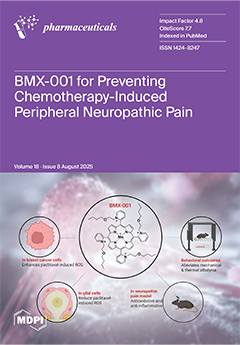Background/Objectives: Medicinal plants are an abundant source of bioactive molecules, particularly in arid environments, such as Saudi Arabia, where
Ocimum basilicum L. (Saudi basil) has long been used for its therapeutic properties. This study aimed to examine the phytochemical profile and bioactivities of non-ozonated (untreated) and ozonated methanolic extracts of
O. basilicum and to determine whether ozonation enhances their biological effects, with a focus on antidiabetic, anti-Alzheimer, anti-inflammatory, antimicrobial, and cytotoxic properties.
Methods: Fresh leaves of
O. basilicum were extracted with methanol, subjected to ozonation, and analyzed by HPLC. In vitro assays were conducted to evaluate α-amylase, α-glucosidase, and BChE inhibition, RBC membrane stabilization, antibacterial activity against
Helicobacter pylori and cytotoxicity using normal lung fibroblasts (WI-38) and human colorectal adenocarcinoma cell line (Caco-2).
Results: Ozonation modified the phytochemical profile, enriching chlorogenic and rosmarinic acids. Ozonated extracts exhibited stronger inhibition of α-amylase with an IC
50 of 5.09 µg/mL compared to 13.6 µg/mL of untreated Saudi basil and α-glucosidase (IC
50 6.15 µg/mL vs. 9.42 µg/mL). They also showed enhanced BChE inhibition with an IC
50 of 13.4 µg/mL compared to 31.8 µg/mL of non-ozonated extract. In addition, ozonated extracts produced significant anti-inflammatory effects by stabilizing RBCs, with an IC
50 of 8.04 µg/mL compared to 8.44 µg/mL for untreated extracts and 4.41 µg/mL for indomethacin. Ozonated extracts produced larger
H. pylori inhibition zones (26.7 mm) and an MBC/MIC ratio of 1. Cytotoxicity testing revealed that ozonated extracts were less toxic to WI-38 cells, with IC
50 values of 437.89 µg/mL versus 191.06 µg/mL, and 149.14 µg/mL compared to 103.7 µg/mL of untreated Saudi basil in Caco-2 cells.
Conclusions: Ozonation enriches the phytochemical composition of
O. basilicum, enhancing antidiabetic, neuroprotective, anti-inflammatory, and antibacterial activities while reducing cytotoxicity on normal cells. These findings support the potential of ozonated
O. basilicum as a safe and promising natural therapeutic candidate for metabolic, neurodegenerative, and infectious diseases.
Full article






